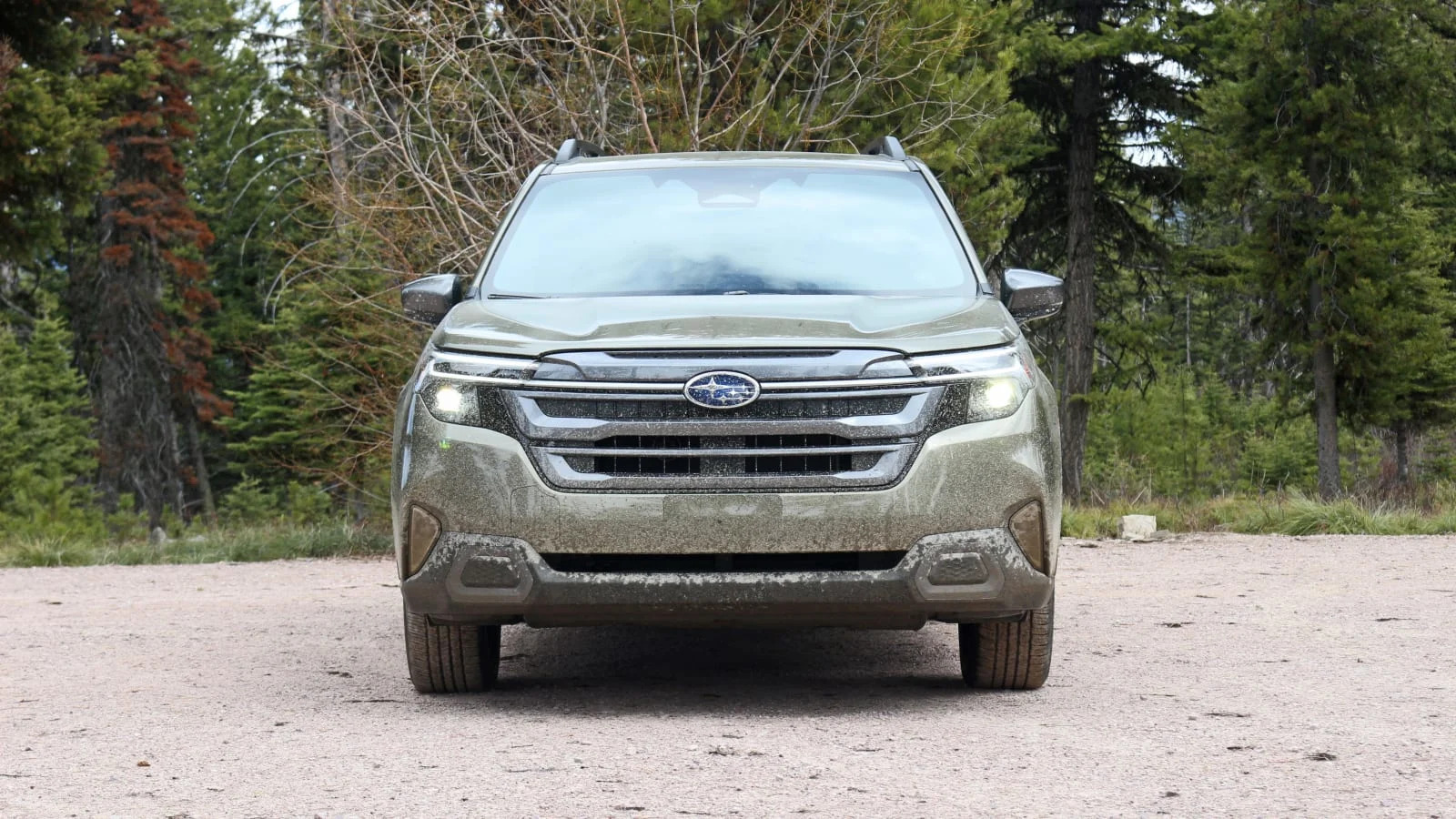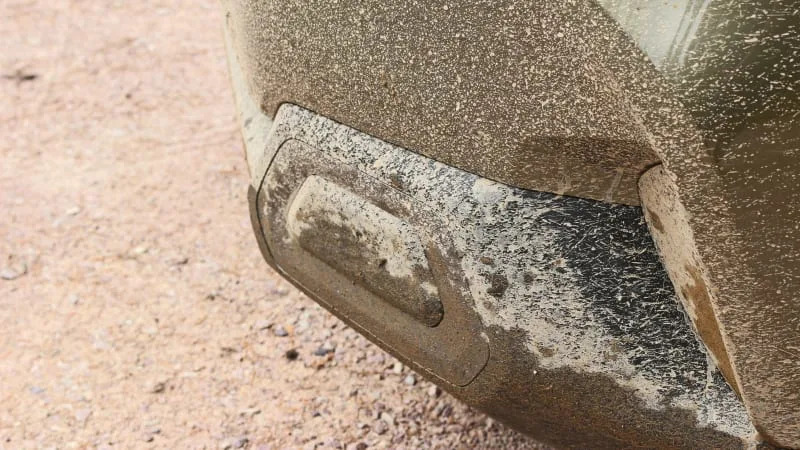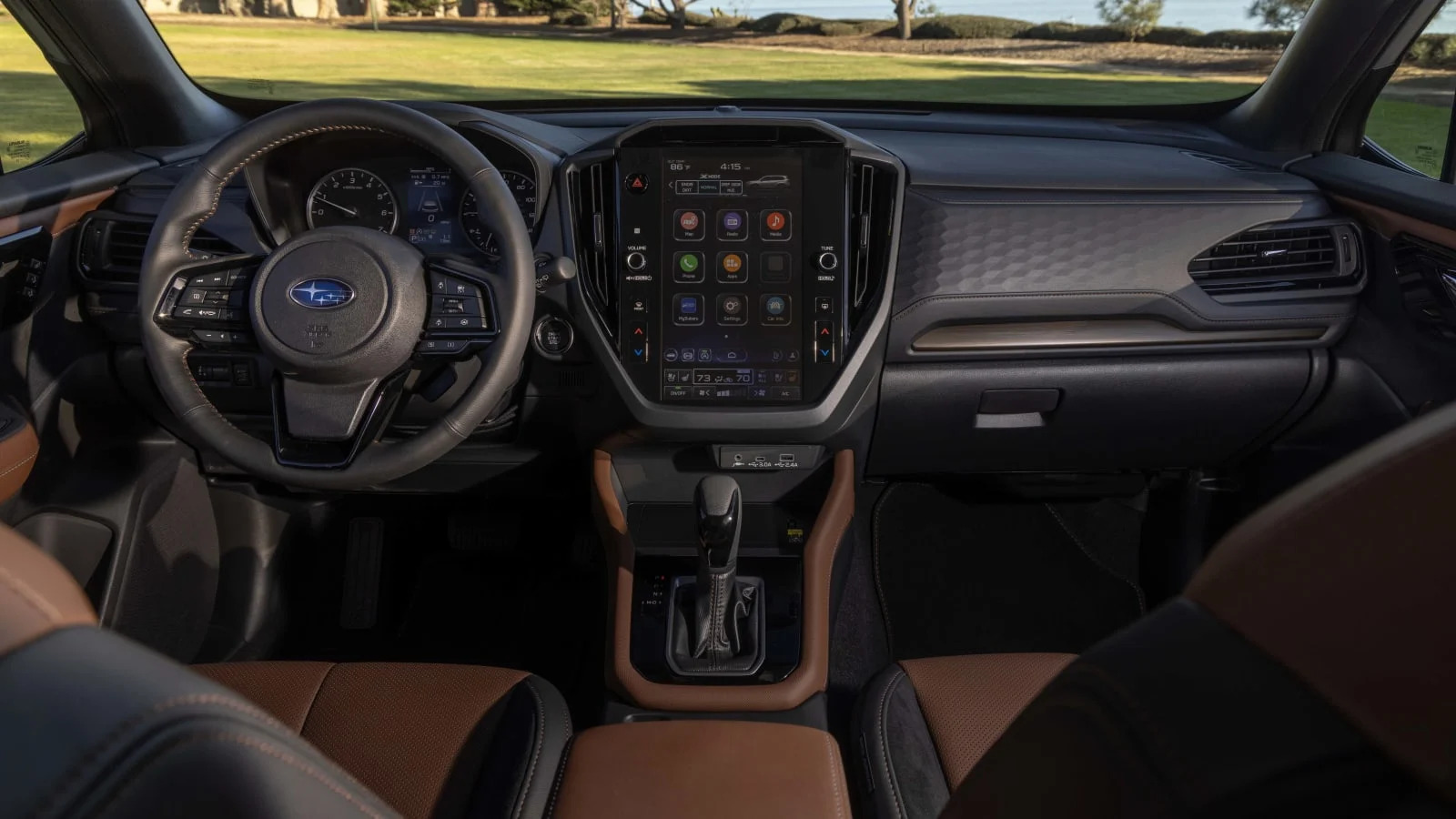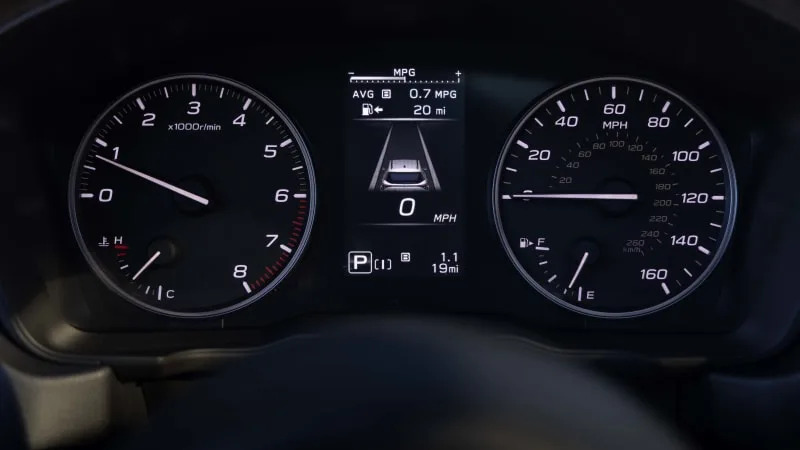MISSOULA, MT. — When the 2025 Subaru Forester was revealed last year, it was pitched as an all-new model. Except it really isn’t. The underlying platform is carried over and the dimensions are virtually identical to the compact crossover it replaces — almost to the inch. In fact, the changes are so subtle that Subaru is comfortable selling the 2024 Forester Wilderness model right alongside the 2025 for at least the remainder of this calendar year.
Despite their subtlety, however, Subaru says there were enough fundamental alterations to label the new Forester as redesigned. And why not? The same was true of the recent WRX redesign; sometimes it’s the little things that make the biggest difference.
Just what are those little things? You can read our preview piece here, but the gist is this: The chassis is now assembled with stronger steel and more structural adhesive, making it stiffer; there’s a new steering rack, making it more responsive and comfortable to drive, and there’s refreshed styling inside and out, along with some small tweaks to available features and packages.
If Subaru’s improvements are to bear fruit, they’d be detectable in at least one — and ideally all — of three categories: chassis composure, refinement (NVH, specifically) and cabin material quality. Fortunately for us, all three are readily evaluated, especially since the first two go somewhat hand-in-hand.

Our drive route included surface streets and two-lane highways offset by a healthy chunk of fire roads and park trails. If it’s something you can drive on in rural (redundant?) Montana, we put tires on it at one point or another.
On solid pavement, the new Forester feels tight and composed. Both road and wind noise are diminished, and the absence of the former was particularly noticeable on the typically broken pavement of the roads we spent most of our time traversing. We’ll give equal credit to both the NVH updates and Subaru’s tire selections; both paid dividends. But if you live someplace where you regularly see snowfall, you’ll want to swap Subaru’s OEM rubber for something that bites into the icy stuff a bit better.
We learned this firsthand driving the Forester down the side of a snow-covered mountain. The AWD system helped keep things manageable, but we relied more on the deep ruts in the ice than the tire tread to keep us pointed in the desired direction. Conveniently, though, this weakness exposed one of the best upgrades the Forester received for this gen: new steering hardware.
Subaru made a big deal about the fact that it ported over the WRX’s dual-pinion steering rack, and it’s understandable why. The new setup isolates the driver from kick-back over sharp impacts without significantly diminishing steering feel, and eliminates the awkward shimmies and jiggles that were previously induced by potholes and speed bumps — or the ruts and washboarding on these winter-beaten gravel roads.



This is also helpful given how quick the new steering is, especially in the Forester Sport model. Quick steering and sharp impacts conspire to yank the wheel from your wrists; Subaru’s updates eliminate that punishment to great effect. High fives all around. The Sport even manages to feel genuinely taut for something that is never going to be driven in anger.
And that’s a good thing, because if you crave speed, the Forester is not for you. The engine is virtually the same as it was for 2024, albeit with adjustments to power delivery. The 2.5-liter naturally aspirated boxer-four delivers 180 horsepower and 178 pound-feet of torque for 2025; those are actually downgrades, strictly speaking, but we’re talking single digits. The continuously variable transmission also returns with paddle shifters available on basically everything but the base Forester.
Peak torque now comes on at 3,700 rpm rather than way up at 5,400 rpm, which improves drivability but does nothing for ultimate performance. Acceleration is smooth and perfectly adequate as a result, but the praise ends there. For more oomph, we’ll have to wait a year for Subaru’s new hybrid; a hypothetical return of the turbo remains a non-starter. Demand simply isn’t there.
If we have any major gripe with the redesign, it’s that adding Subaru’s five-year-old, portrait-oriented touchscreen isn’t much of an upgrade considering the system is mid-pack at best. The display resolution is decent and there’s plenty of tech behind the polish, but response times are middling and the perma-docked options at the bottom make for a crowded home screen. To Subaru’s credit, most of the regularly used functions are included in that jumble, but some simple actions require extra steps. Enabling climate control recirculation requires navigating to the climate control page, for example. When I smell skunk, I want to hit a button and make it go away, not hunt through options while the ammonia burns my nostrils.



Taking a step back, there are two outstanding items for the 2025 Forester team to address: the hybrid and the Wilderness model. The former is due next spring, while the latter remains up in the air (we heard hints at the L.A. Auto Show that this coming fall is possible for a reveal). The 2024 Wilderness will have to do for the time being, but having played around with the 2025’s new steering rack, we can confidently say that the upgrade is worth waiting for unless you need to buy a knobby-tired Forester right freakin’ now.
As for the rest of the 2025 Forester? Well, in every way that matters, you can expect more of the same. The cargo area is nominally larger, though we expect it will be functionally the same (It was already an overachiever, so that’s fine). It’s not appreciably quicker or slower, heavier or lighter, smaller or larger. And why should it be? It sells reliably just the way it is, and Subaru enjoys class-leading or highly competitive metrics pretty much across the board (with the glaring exception of horsepower).
The 2025 Subaru Forester is an incremental evolution of a solidly competitive car. If you already own a current Forester, rest assured that you’re not missing out on much, but those in the market for a new model can rest assured that FOMO won’t factor into the decision. There’s nothing the 2024 model does better than the ’25 with the exception of Wilderness, and Subaru’s got that covered.

